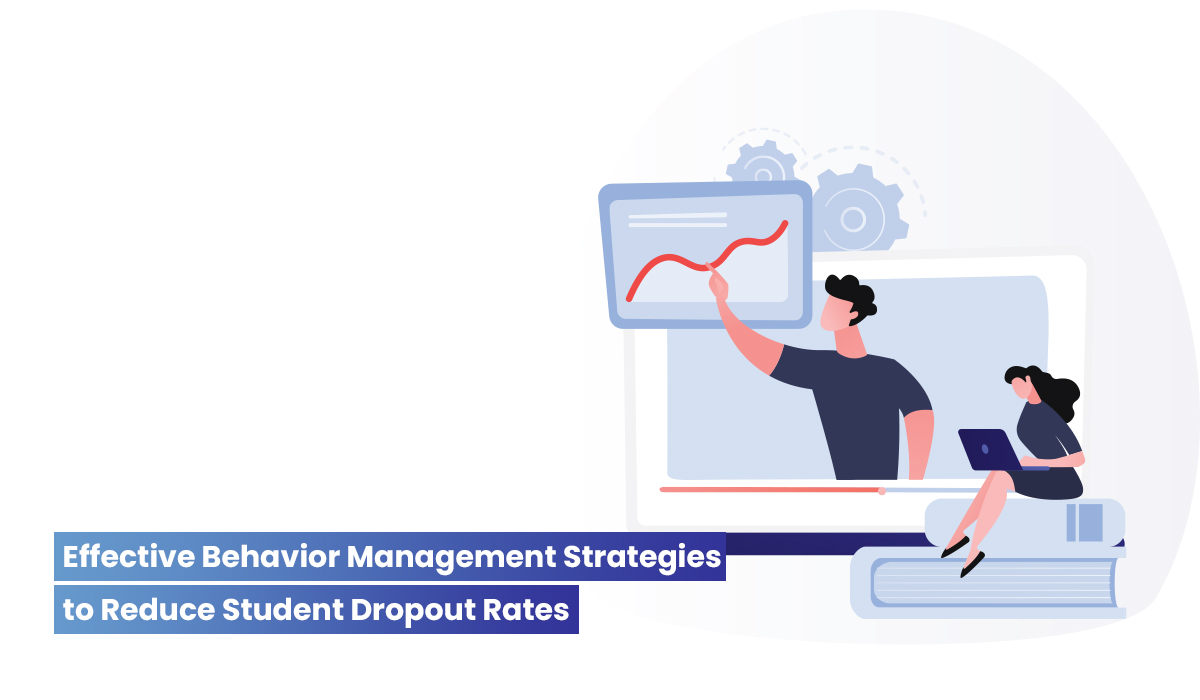10 easy to implement behaviour management strategies

Remember the old saying which we have heard a zillion times, “not all fingers are same?” Correspondingly, not all students are alike in a classroom. A classroom is a medley of differently abled students. It is not new to see paper aeroplanes fly across the room, students race between desks, screeching and yowling all over. Are these situations tamable? Of course, yes, with a set of behaviour management strategies. The situations stated above are the indicators of poor classroom management, which is certain to elevate stress and burnouts among instructors. This brings up the much-conflicted topic, behaviour management strategies. Laying out classroom management strategies help manage students effectively right from the start of the year. However, the question lies in picking the effective classroom strategy that works the best.
What are behaviour management strategies?
Behaviour management strategies according to the educationalists, Gauthier and Castonguay is interesting. It is using a set of educational practices/strategies, to prevent and manage inappropriate behaviour to promote both teaching and learning. (Source: Steve Bissonnette, Ph.D., TELUQ University & Clermont Gauthier, Ph.D., Laval University). Here are 10 most effective behaviour management strategies that will help your classroom run smoothly, minus behavioural issues. Believe on us, these management tips can enhance prosocial student behavior and streamline academic engagement, establishing an orderly environment.
It’s most effective to promote positive behavior, student learning and collaboration in the classroom through a democratic process of participative decision-making, rather than coerce students and comply with the teachers' demands.
The following 5 most effective strategies are designed to encourage student behavior and discipline in positive and powerful ways, so that teachers can prevent problems before it arises and also avoid dealing with difficult students.
10 best behaviour management strategies
- Set classroom rules
- Reiterate expectations
- Improve student involvement
- Stimulate learning
- Build a relationship through effective body language
- Reward good behaviour
- Round-the-clock coaching/supervising
- Behaviour charts
- Visible praise
- No mass punishments
1. Set classroom rules
Veteran teachers know this secret! Well-drafted rules in the classroom can by half reduce behavioural difficulties. Rules formalize the expectations in your class. But there are certain tricks here! Keep rules to the minimum, explain students the real reason behind the rules. Frame them up in a positive way. Above all, make your bunch of students believe that getting ready for rules is the secret of success.
2. Reiterate expectations
Creating a plan is just not enough. An effective behaviour management system maintains order in the classroom. Encourage your students by communicating your behavioural expectations to them. Realign your discipline vision, classroom rules and make adjustments as needed. This will help ensure visibility in the classroom to get in the right mindset.
3. Improve student involvement
It is a common scenario that the students with strong academic record don’t misbehave. The others, meet up being school dropouts or regular absentees. It is better to nip the bud while young. Instructors want students to actively participate in lessons every day rather than remain passive listeners. Fine tune your learning management system with collaborative, outcome focused, and pedagogic tools. Teach the student the art of speaking. Make good use of the opportunities to be active in learning participants and improve the overall classroom experience. Frequently, get feedback from the students and encourage peer learning among students.
4.Stimulate learning
Instructors should incorporate high interest in their lesson plans to improve engagement with students. Even though Instructors sound monotonous, they can maintain interest by refining teaching tactics and allow students to create success in classrooms. They can effectively teach using flipped learning, blended learning, pair teach, collaborative learning, group work, and interactive learning. Gripping on to such effective strategies helps you manage your classroom better. Apart from aiming for an organized setting, an Instructor should aim to chisel a place where students can and will learn. Provoking students learning with well-planned activities will get them engaged in their task.
5.Model ideal behaviour through effective body language
The instructor can build a strong relationship with students through effective verbal and non-verbal communication skills. The close contact can help maintain a calm atmosphere in classrooms to enable a positive learning environment that teaches student discipline. Effective body language doesn’t hinder the flow of lessons. Right from the start, use the right postures, upbeat voice, gentle facial expressions, eye-level contact, and effective gestures. These will convey classroom discipline across the student group.
6.Reward good behaviour
This management technique works even with those students with the most challenging behaviour. Perfect classroom management comes with this technique. Reward students with good behaviour, positive feedback, and completed homework assignments. Incentivizing quiet heroes produces quick results. This can motivate students exhibiting bad behaviour to work towards behaviour improvement and help achieve academic goals.
7.Round-the-clock coaching/supervising
One of the best behaviour strategies is to effectively supervise and coach the student in both the classroom and within the school. Instructors can adopt various strategies by which effective coaching and supervision can happen. Reviewing rules and expectations periodically, constant scanning the classroom, and instantly dealing with problems is to mention a few.
8. Behaviour charts
Create a behaviour contract with your students, which they should oblige with. This approach to classroom management is a special tactic. You will see a change in classroom management. On signing the contract, students with undesirable behaviour will begin paying attention in class. They will develop positive relationships among their peers. Charting behaviours reinforce discipline among students. Also, try the Incident Report the moment when a behaviour incident occurs in your classroom. This will automatically alert their peers, ensuring they remain disciplined and behaved in an appropriate manner.
9. Make praise visible
Do not hide praises from parents! Let them know with positive letters and phone calls. Students will be surprised to see their parents surprised their behaviour! Positive phone calls, sending complimentary letters home works wonders.
10. Punishing the class, on the whole, rethink!
Instead of punishing the entire class, practice addressing behaviour issues in isolation. The former can hurt your trustworthiness with the student group who are on-task. Calling out students who misbehave separately in a friendly manner and clarifying things can help. Instead of shouting, you can ask, “Do not talk in between the class and disrupt, do you have any questions”? This basic approach signals a friendly disposition, accounting to a good behaviour management strategy.
Sister Doreen Willis who teaches K-2 at St. John the Evangelist School, Silver Spring, MD’s observation makes sense here. According to her, constructive behavioural management is easily attainable when an instructor doesn’t make rules that she is not willing to follow through with. Being consistent and fair will automatically let the students know she means and what she says. (Source: teachervision.com)



